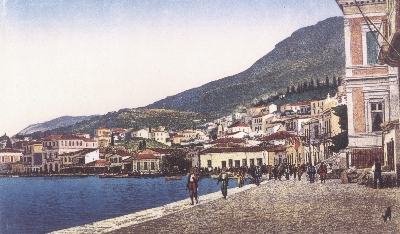Quilt No.800DP - Despina Petridis

1970 x 1770mm
The quilt was made by the quilt maker in Vathi, on the Greek island of Samos in 1962. It was an engagement present from the sister of her future husband, Niko. Despina Petridis came to Australia in 1962 and the quilt was part of her luggage. It is in pristine condition and is not used now.
"A Paploma From Samos
In 1962 Despina Petridis left Vathi, the capital of the Greek island of Samos, well known for its natural beauty, to come to Canberra, Australia's capital. Her mother, Gramatiki Zonous was very reluctant to see her go; she was only nineteen, and they had no other relatives in Australia. But Despina had made her big decision to leave, for although her dressmaking skills were much in demand, she grew tired of not getting paid for the work she did. These were very difficult years in Greece, and there was little money around.
When she became engaged to Niko, his sister also named Despina, promised her a 'paploma' (quilt) as a wedding gift. It was important to have a 'paploma' as part of her 'prika' (trousseau); all part of the rich, Greek traditions that are associated with preparations for marriage. She had this beautiful pink satin quilt made by a local quilt maker in Vathi, and was able to give it to young Despina before she left for Australia. It is still in its original, pristine condition.
When Despina arrived here, she was well looked after, 'I was fortunate, and fell into good hands, with good people' she recalls. Despina and Niko married in Canberra in 1963, in the small pre-fabricated building used as a church before 'St. Nicholas' was built. They moved forward into married life with a strong commitment to working hard to establish themselves. They now are enjoying their retirement, and regularly visit their families in Greece. They have three children, George, Vicky and Alexandra."
[Written by Lula Saunders, adapted from interview 10.1.01 for the National Quilt Register]


Related Quilts:
2200 x 1840mm
1750 x 840mm
2330 x 19400mm
1960 x 1950mm






